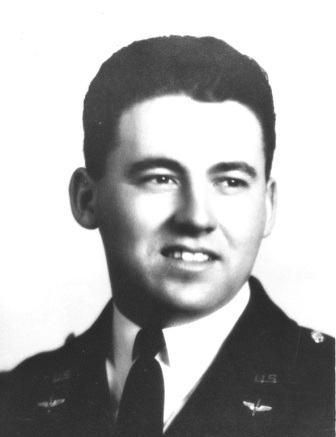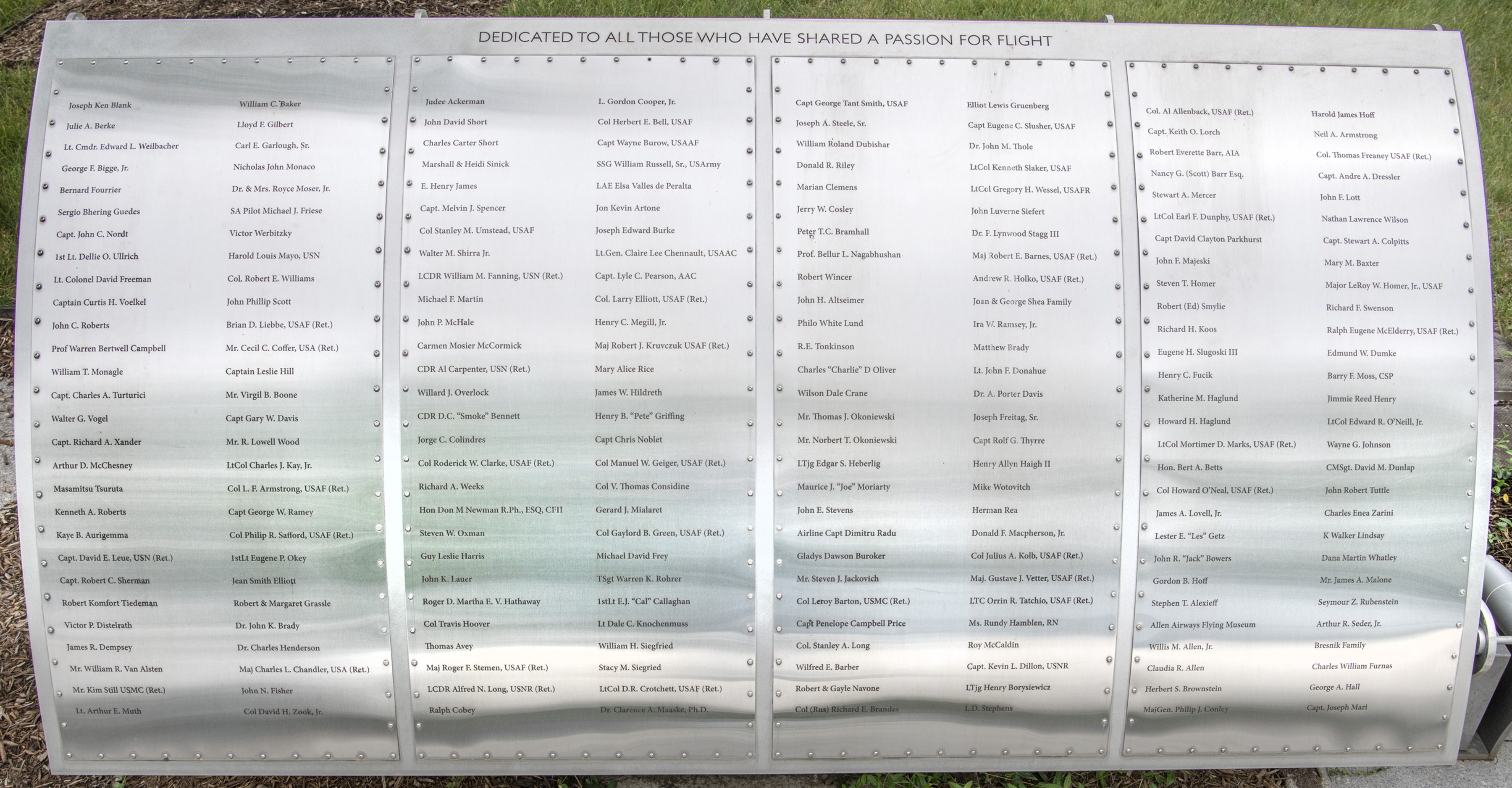
Foil: 23 Panel: 3 Column: 1 Line: 25
Wall of Honor Level: Air and Space Sponsor
Honored by:
Stanley A. Long was born in Munising, MI on August 20, 1918. He attended schools in Marquette, MI including Northern State Teachers College before entering military flight training during World War II (WWII). He began flying in the Civilian Pilot Training Program while in college and graduated from Randolph and Kelly Fields as an Army Air Corps pilot in September, 1941 with class 41-G.
He flew a P-38 in the Aleutians from June, 1942, to March, 1943. Flying a P-38, he was the first pilot in WWII to down an enemy plane, a Japanese bomber (Mavis). Out of a squadron (54th Fighter Squadron, 55th Group 343rd Group, 11th FC) of 31 pilots sent to the Aleutians in 1942, he was one of nine who survived. His mission was to fly cover for bombers and shoot up Japanese gun emplacements. Besides the Mavis, he was credited with a Zero.
Following his tour of combat duty, he was assigned to the 441st Army Air Base Unit as commander of a training class at Metropolitan Airport, Van Nuys, CA. Other assigned stations were Muroc, Salinas, and Chico, CA. He was at Portland, OR, in the 432nd Army Air Force Base Unit when the war ended and was discharged in September, 1945, with the rank of major.
After WWII, he became owner-operator of Long's Air Activities and manager of Marquette County Airport. He also helped locate the site for K.I. Sawyer AFB.
He was recalled to active duty in 1951 and sent to Korea, where he served as a commander of the 67th Fighter Squadron, known as the "Red Scarf" Squadron, flying the F-51D Mustang, and later, the F-86. He was shot down over the Yellow Sea but rescued. The mission of the 67th was interdiction and support for ground troops. He was credited with the destruction of a large hydroelectric plant in North Korea. He flew combat in Korea from mid-March, 1952, to mid-November 1952.
Returning from Korea, he was reassigned to Reno, NV, as an advisor to the Nevada Air National Guard, then, from 1953 to 1956, to Milwaukee with the Wisconsin ANG.
In 1957 he became commander of K.I. Sawyer AFB, and in 1958 he was reassigned to Elmendorf AFB, AK as chief of North American Air Defense (NORAD) combat operations center.
His last assignment was as chief, combat operations center, Truax AFB, WI from 1962 to 1966. He retired in 1966 with the rank of colonel.
His awards and decorations included the Distinguished Flying Cross with one oak leaf cluster, Air Medal with four Oak Leaf Clusters, and the Air Force Commendation Medal.
After his AF retirement, he worked as Assistant Tax Assessor for the city of Marquette from 1970 to 1980.
He married Virginia Butler of Marquette on May 1, 1943. He had two sons: David, a software engineer, and Dennis who died in 1969 while involved in a swimming rescue for which he posthumously was awarded the Carnegie Hero Medal and a Valor Award from the U.S. Department of the Interior.
Stanley died Aug. 13, 1987, and is buried in Park Cemetery, Marquette, MI.
Career summary:
1941 - graduated from Randolph and Kelly Fields.
4 Aug 1942 - Fi9rst P-38 pilot to down an enemy plane (Japanese bomber in the Aleutians).
1952 - Commander, 67th Fighter Squadron, Korea
1957-1958 - Commander, K. I. Sawyer AFB
1958 - Chief of NORAD Combat Center, Elmendorf AFB, AK
1962 - Chief, NORAD Combat Center, Truax AFB, WI
1966 - Retired
Wall of Honor profiles are provided by the honoree or the donor who added their name to the Wall of Honor. The Museum cannot validate all facts contained in the profiles.
Foil: 23
